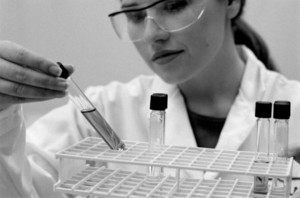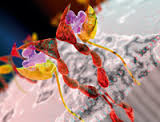Over the 12 months that ended September 2009, global sales of generics grew by 7.7%, up from 3.6 % the year before, IMS Health reported. This compares with the 5.7% growth seen within the overall global pharmaceutical universe in 2009.
IMS Health, BCC: Generics sales continue to climb
Home/Pharma News
|
Posted 12/03/2010
 0
Post your comment
0
Post your comment

As pointed out by Ms Doris de Guzman on ICIS.com of 10 February 2010, the global generic drug industry has witnessed an almost decade-long sales euphoria, and volumes and sales growth of prescription generic drugs continued to increase in 2009. She writes that during the 12-month period that ended September 2009, global generic products generated US$83 billion (Euros 59.8 billion) in audited sales, according to IMS. US market data provider BCC Research estimates that the global market was worth US$84 billion in 2009.
"The global industry virtually had 10 years in a row of good growth - not only in prescriptions but also in sales," Mr Doug Long, Vice-President, Industry Relations at IMS Health, told her. "All the dynamics of the generics industry were strong and it seems to have even prospered more during the economic slowdown."
Generics now account for 72% of the total US pharmaceutical market volume, reaching an all-time high in 2009, he added. However, they still only account for 17% of total sales, despite generics sales having more than tripled since 2000. Ms De Guzman writes that in the 12 months ended November 2009, the US generics market was valued by IMS at US$31 billion, while BCC Research estimates the US market in 2009 at US$34 billion.
BCC Analyst Mr Paul Evers told her that he noted continued volatility. "The demand for generics is increasing steadily because of pressure to control healthcare costs. But at the same time, fierce price competition is resulting in slashed profit margins for participating companies," he said. "A major growth driver for the generics sector is that several blockbuster pharmaceutical brands are coming off patent and therefore open to generic competition."
BCC reported that Israel-based Teva Pharmaceutical Industries' (18% global market share), Switzerland-headquartered Novartis's US generics business, Sandoz (10%), and both US-based Mylan (6%), and Watson (6%) are leading generics manufacturers, already occupying 40% of the global market. IMS estimates that sales from the top 10 US generic players grew at an average of 13.2% last year.
The top four global generics manufacturers - Teva, Sandoz, Mylan and Watson - also accounted for 47% of the US market as of 2009, according to IMS. The top 10, which also includes Canada's Apotex, Pfizer's US-based generics business Greenstone, Qualitest Products, Mallinckrodt and Actavis US, all US, and Lupin Pharmaceuticals, the US subsidiary of India-based Lupin, accounted for 66% of the market.
"This means there are still many players out there that are pretty small and would be ripe for acquisitions or mergers," noted Mr Long. "Everybody expects that there will be consolidations within the generic drugs industry as smaller producers are experiencing significant margin pressure in this environment. At the same time, large companies are consolidating their operations in established markets and/or expanding into emerging ones through local acquisitions or partnerships,” he said. (see also After generics slow down in 2013: into biosimilars and Global generics: time for consolidation and expansion)
References:
Tracy Staton. Fast-growing generics ripe for consolidation. FiercePharma. 10 February 2010.
Generic drugs sales continue to climb. Pharmagossip. 10 February 2010.
Doris de Guzman. Nonbranded drugs are expected to continue their strong growth. But could the dearth of their new branded rivals cause the sector to hit a wall? ICIS. 10 February 2010.
Guidelines
New guidance for biologicals in Pakistan and Hong Kong’s independent drug regulatory authority
Canada poised to remove requirement for Phase III trials for biosimilars
Policies & Legislation
Argentina streamlines drug approval process
ANVISA tackles 24-month backlog in biologicals post-registration petitions
Most viewed articles
The best selling biotechnology drugs of 2008: the next biosimilars targets
Global biosimilars guideline development – EGA’s perspective
Related content
Formycon signs new aflibercept biosimilar pacts and launches ranivisio in Europe
Bio-Thera and Stada expand biosimilars alliance to include tocilizumab
Global partnerships for biosimilar commercialization announced
New denosumab and ustekinumab biosimilar launches in US, Canada and Japan
Formycon signs new aflibercept biosimilar pacts and launches ranivisio in Europe

Home/Pharma News Posted 13/11/2025
Bio-Thera and Stada expand biosimilars alliance to include tocilizumab

Home/Pharma News Posted 20/10/2025
New denosumab and ustekinumab biosimilar launches in US, Canada and Japan

Home/Pharma News Posted 10/07/2025
The best selling biotechnology drugs of 2008: the next biosimilars targets







Post your comment